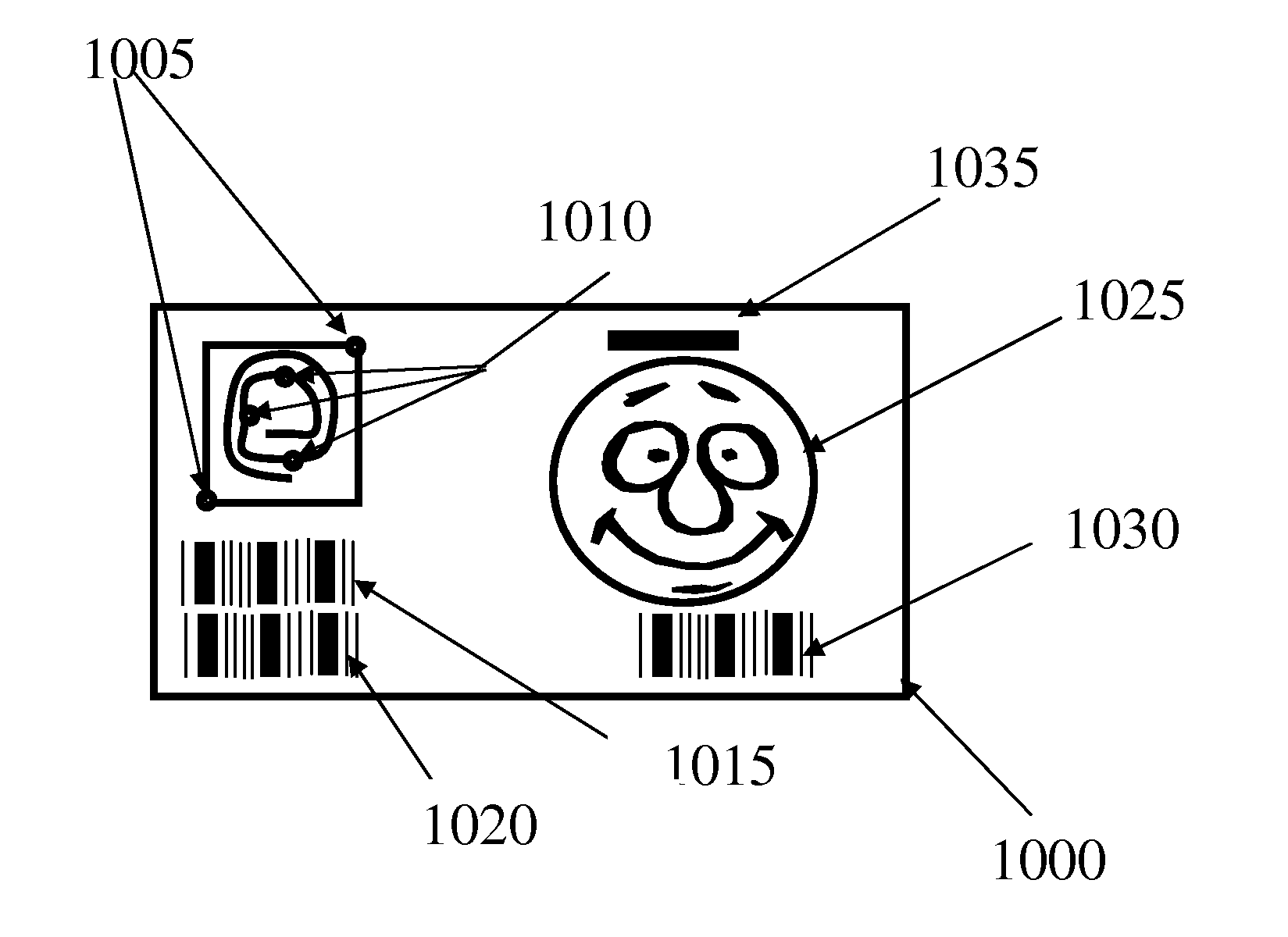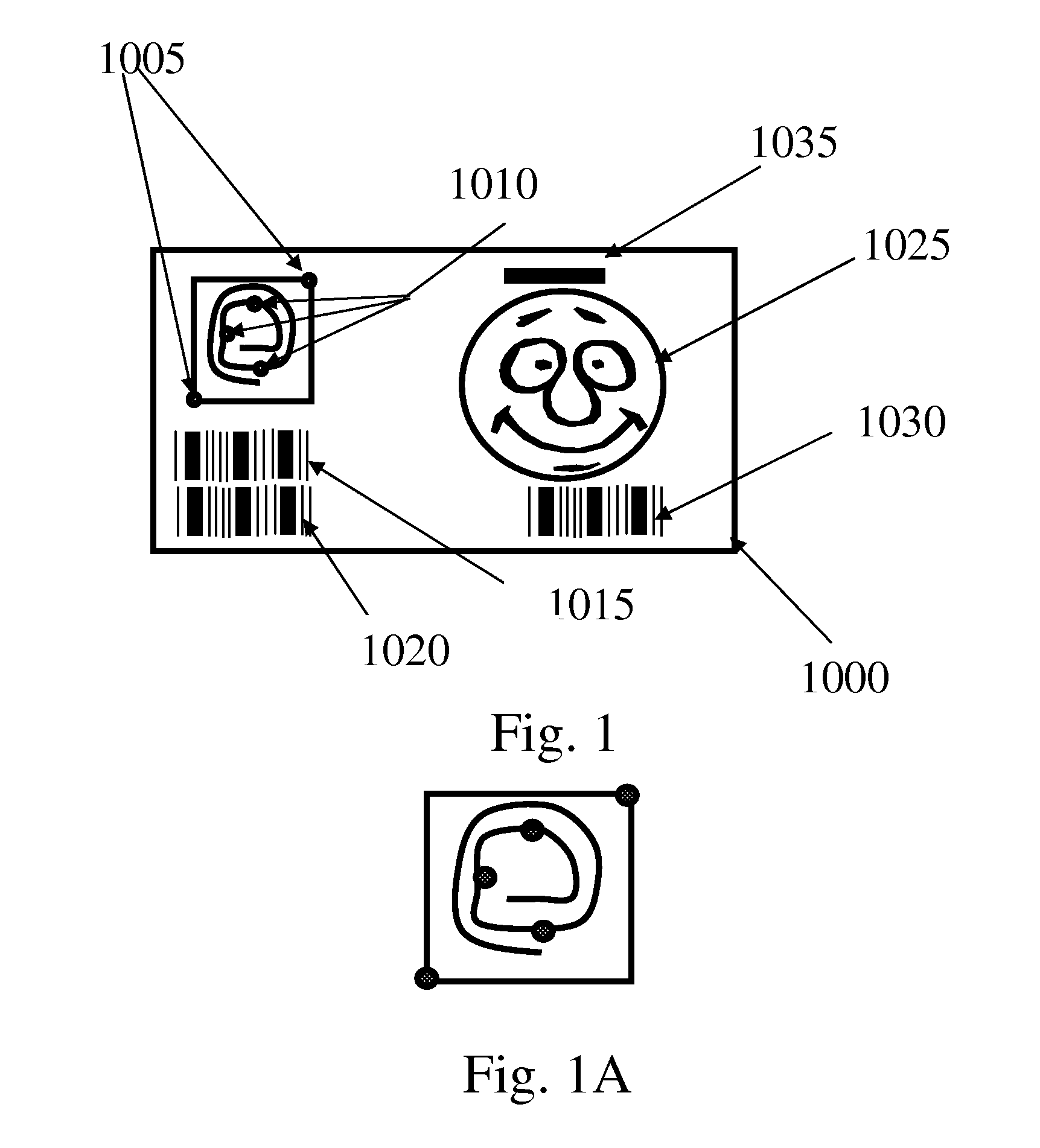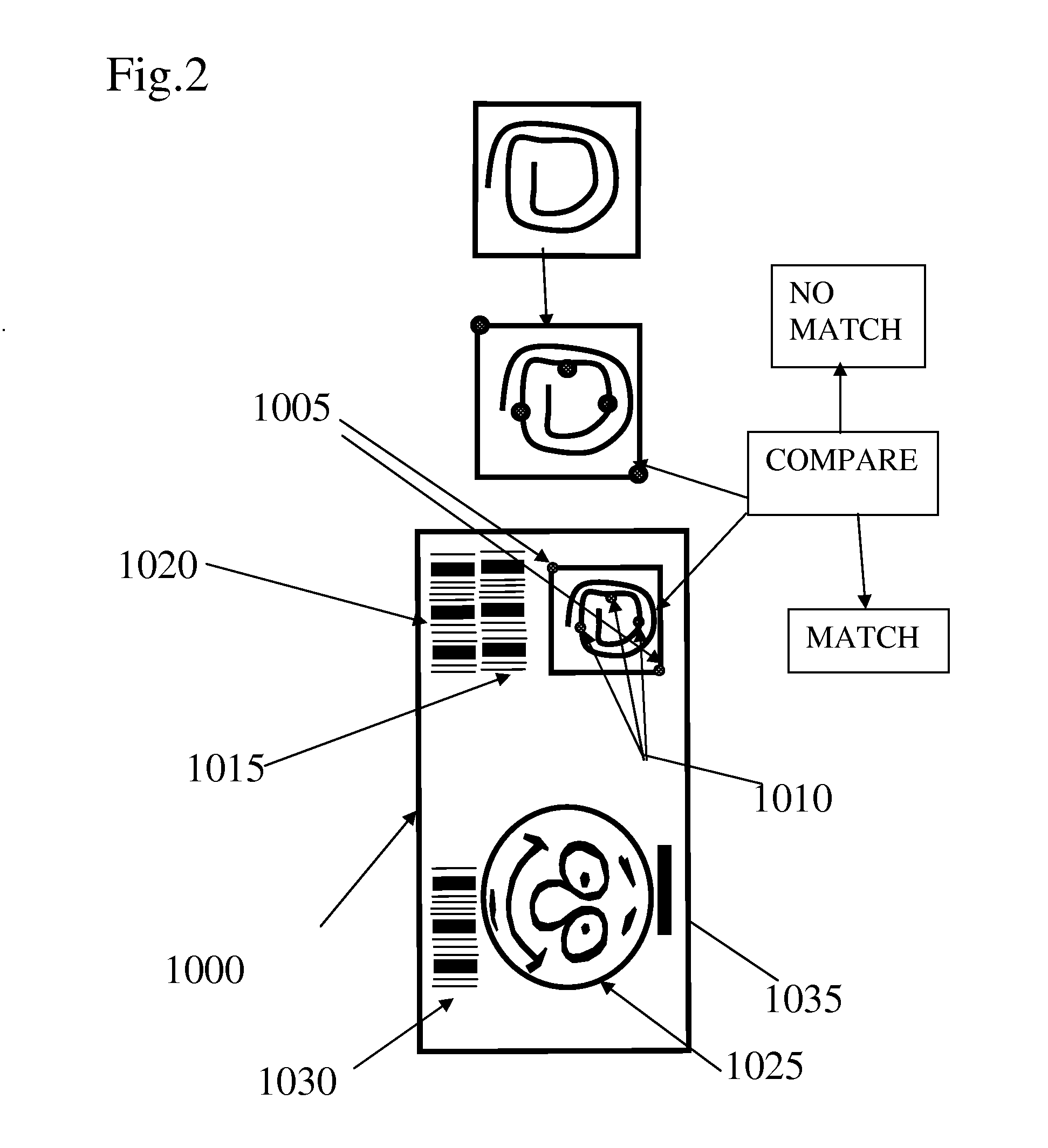Security marking and security mark
a technology of security marking and security mark, applied in the field of security marking, can solve the problems of increasing cost and complexity, increasing cost and complexity
- Summary
- Abstract
- Description
- Claims
- Application Information
AI Technical Summary
Benefits of technology
Problems solved by technology
Method used
Image
Examples
Embodiment Construction
(a) General Description
[0065]The present invention provides a security marking or identity “tag” that can be affixed to a security card, or to a product label, or to a product itself. In one embodiment of the invention, the identity tag is composed of at least two layers wherein one layer carries identification information such as the name, photograph and personal reference number, and the other layer carries additional latent security markings represented by a layer comprising a pattern of conductive materials either inscribed in or printed thereon. The two individual layers of the security marking may have different transparencies. For example, the first of the two layers may comprise the core (i.e.: main body) of a security card, and have a matt, preferably white, coloring as a result of added pigment with moderate to low transparency. By contrast, the conductive layer of the security marking may have a very high transparency. Therefore, the conductive layer may be applied direct...
PUM
 Login to View More
Login to View More Abstract
Description
Claims
Application Information
 Login to View More
Login to View More - R&D
- Intellectual Property
- Life Sciences
- Materials
- Tech Scout
- Unparalleled Data Quality
- Higher Quality Content
- 60% Fewer Hallucinations
Browse by: Latest US Patents, China's latest patents, Technical Efficacy Thesaurus, Application Domain, Technology Topic, Popular Technical Reports.
© 2025 PatSnap. All rights reserved.Legal|Privacy policy|Modern Slavery Act Transparency Statement|Sitemap|About US| Contact US: help@patsnap.com



